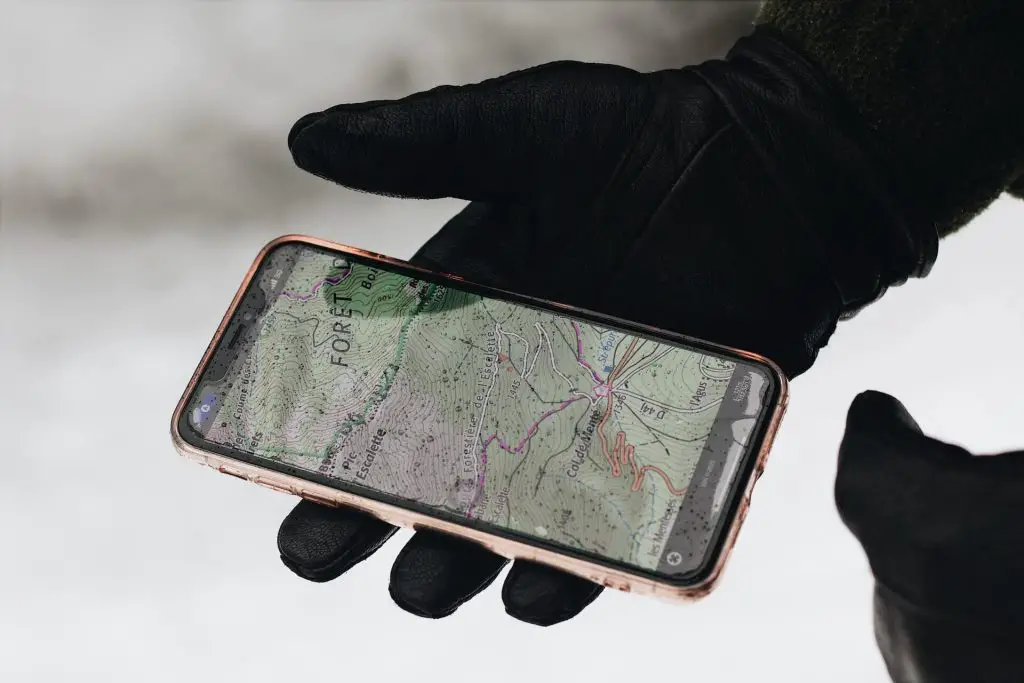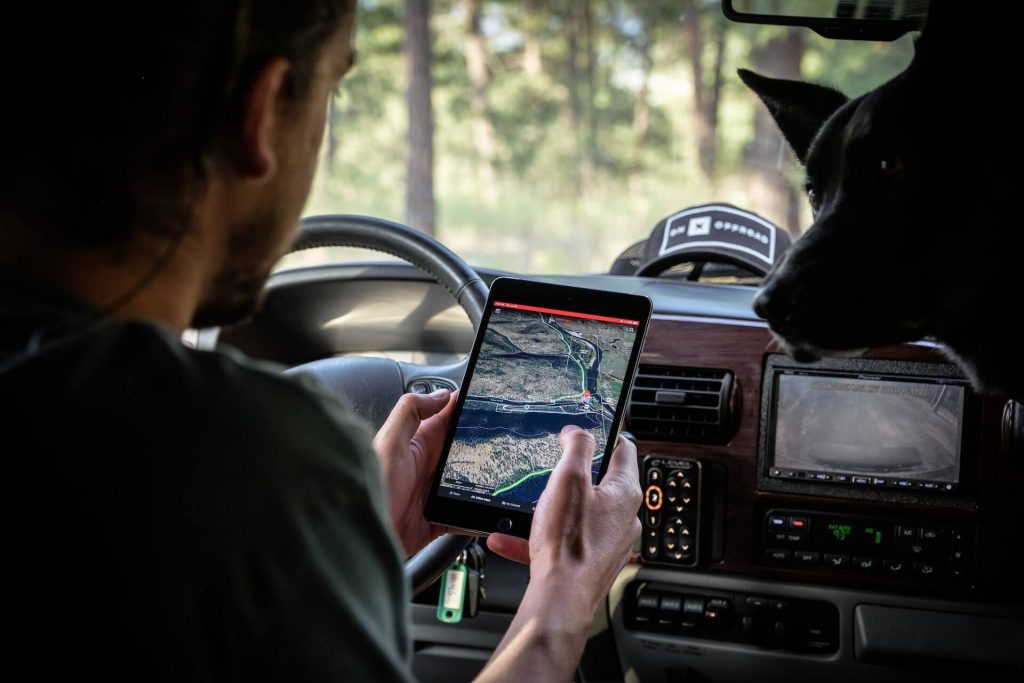Heading out on a backpacking trip is a great way to reset and get away from the city to recharge. While the sounds of nature and beautiful sights are worth the trip, they come at a cost, being off the grid with no access to electricity. How can you keep your phone charged on your backpacking trip?
The best ways to charge your phone on your backpacking trip are with a either portable solar panel or with a portable power bank. These two methods will ensure your phone will be charged during the duration of your trip.
With these two methods you can keep your phone charged, however, there are a few things to consider before you buy either that can make your frustrated or worry free. Below we will also cover ways you can extend your phone’s battery life.
How to charge your Phone While Backpacking

Portable Solar Panels
The first method to charge your phone is with a portable Solar panel. Portable solar panels charge your phone by using the energy of the sun and converting it to energy into your device. Portable solar panels can be a great way to charge your phone during your next backpacking trip,
Pros of Portable Solar Panels
The first pro of solar panels is ease of use. All you need to do is lay the solar panel out to face the sun and the panel will do the rest. You don’t need to bring any extra batteries or generators to charge your phone. Portable Solar panels are a convenient to charge your phone when you are in the middle of nowhere and need power.
Cons of Solar Panels
While there are many great benefits of portable solar panels, there are a lot of cons also. The first con of portable solar panels is that they can charge very slowly. If you are in a rush or need power fast then portable solar panels may not be for you. Another con of portable solar panels is that they can be bulky to store in your backpack or they can be heavy.
If the weather is unexpectedly cloudy or rainy then you won’t be able to charge your phone using the portable solar panel. Solar panels can also be inconsistent when you are trying to charge.
Our favorite Portable Solar Panels for Backpacking
Our favorite portable solar panel is the Tranmix Solar Charger. This solar charger contains four small solar panels and will allow you to charge up to 25,000 mAh which is enough to charge your phone about five to eight times completely. You can charge your Iphone, Samsung Galaxy, and any other smart phone device using this portable solar panel.
This portable solar panel boasts fast charging ports that will allow you to charge your phone from 0 to 30% in less than half an hour. This portable solar panel is also very durable. Unlike other portable solar panels it is compact and packs down to take up minimal space in your pack. You have the option to charge this up before you leave and you can charge using the sun during your trip.
Tranmix Portable Solar Phone Charger on Amazon
Portable Power Bank

Your second option and likely the best option to charge your phone when backpacking is to use a portable power bank. Portable power banks are great for backpacking, day hikes, and travel. The way power banks work are you charge them fully at home and then you bring them along your trip and charge your phone with its charging cord plugged into the portable battery. This has been my go to method to keep my phone charged on my outdoor and travel trips.
Pros of Portable Power Banks
The pros of portable power banks are that they are so easy to use. Once you have it charged all you need to do is plug in your phone via its charging cord and you’re good to go. Its like charging at a wall outlet. The next pro of a portable battery is the small size. Portable power banks don’t take up that much space in your pack. Another pro of portable power banks is you can pick how small or large of a battery you want to pack.
Another great benefit of power banks is that you can pick a battery that can charge your phone completely four or five times. This will help you charge your phone for your multi-day trips without ever having to worry about power.
Cons of Portable Power Banks
There are some cons to power banks The first con of portable power banks is the extra weight you need to carry. Typical portable power banks are generally around one pound or the same weight as your large smart phone. Another downside of portable power banks is that they can take a few hours to charge at home, but that doesn’t matter once you are out on your backpacking trip. Another thing to think about when is that portable external batteries only charge through USB ports, so if you’re trying to charge something other than your phone then it can be a bit tricky to figure out.
Our Favorite Portable Power Bank
My go to power bank has been Anker. The Anker Powercoer Slim 10k is a fantastic choice. This power bank has the capacity of 10,000 mAh meaning you can charge your phone four to five times completely. This charger boasts a quick charging port which allow you to charge your phone insanely quickly. Another great benefit is the port to charge the power bank itself allows for fast charging.
I have taken my Anker Power Bank to charge my Iphone, my Samsung Galaxy, and my DSLR camera batteries. These things are incredibly durable and have been tossed around for years with no issues. Anker power banks are a no-brainer.
Anker PowerCore Slim Power Bank on Amazon
How to extend Your Phone’s Battery While Backpacking
Airplane Mode
Now that you know about the two options to charge your phone, there are some things you can do to extend your phone’s battery life during your trip. The first thing you should do is put your phone on airplane mode. If you don’t put your phone on airplane mode, your phone will constantly search for cell service which leads to draining your battery very quickly.
You should only turn off airplane mode once you are back on the road or its an emergency. Airplane mode will help conserve a lot of battery life during the duration of our trip.
Download Maps
Before you even head out on your trip, one of the first things you should do is download the offline map on Google Maps. Going out to backpacking areas are notorious for having spotty cell service. So it is wise to download maps beforehand so your phone can help you navigate to your tent site or trailehads without having to rely on your phone’s network.
Downloading maps beforehand will help lower the amount of data and energy your phone uses since it won’t have to download new parts of the map during your drive.
Background Apps
The next thing you can do during your trip is to disable background apps and to exit any apps you had previously. Since you will likely not have cell service these background apps can constantly try to reach back to their servers which will drain your battery unnecessarily. By only using the essential apps such as GPS, trail maps, flash light, and camera you will save a lot of phone battery.
Final Thoughts
Getting off the grid and exploring nature on your next backpacking trip can be a great time. Having a way to charge your phone so you don’t have to worry about your battery life will make your trip that much more relaxing. Using either portable solar panels or portable external batteries will quickly solve your problem.
The convenience and ease of use for portable external batteries has made charging my phone in the wilderness so easy. Enjoy taking photos and navigating with your fully charged phone on your next backpacking trip!


